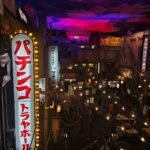Discover the coolest Japanese streetwear brands that blend tradition, rebellion, and innovation. From cult labels to rising stars—explore the fashion scene shaking up global style.
Table of Contents
1. BAPE (A Bathing Ape)

- Founded: 1993 in Tokyo by Nigo (Tomoaki Nagao)
- Description: Widely regarded as the most famous Japanese streetwear brand, known for its bold designs and global influence. BAPE also operates two sub-labels: AAPE by A Bathing Ape (menswear) and BAPY (Busy Working Lady) for womenswear.
- Key Style Elements: Iconic camouflage patterns that have become signature to the brand’s identity.
- Notable Collaborations/Influences: BAPE has collaborated with many renowned international brands, helping shine a spotlight on Japanese streetwear worldwide. Its high-profile partnerships and celebrity clientele helped pave the way for other Japanese labels.
- Instagram: instagram.com/bape_japan/
2. Undercover

- Founder: Jun Takahashi (Founded in the early 1990s; exact date not given in source.)
- Description: Undercover is considered one of Japan’s most influential streetwear brands, distinguished by its avant-garde approach. The brand’s slogan – “We make noise, not clothes” – reflects Takahashi’s rebellious ethos and desire to revolutionize street fashion
- Key Style Elements: A distinctive fusion of pop culture references and punk aesthetics, creating streetwear that is edgy yet artful
- Notable Collaborations/Influences: Undercover has an impressive history of collaborations with major global brands like Nike, Valentino, and Converse. These partnerships, along with its bold designs, have cemented Undercover’s status in high-fashion streetwear circles.
- Instagram: undercover_lab
3. Yohji Yamamoto

- Description: Yohji Yamamoto is a legendary Japanese designer whose namesake brand bridges high fashion and streetwear. Renowned for working almost exclusively with the color black, Yamamoto’s designs are avant-garde and instantly recognizable.
- Key Style Elements: Oversized, asymmetrical silhouettes executed in predominantly black fabrics, reflecting a luxe yet edgy streetwear vibe. Despite numerous collaborations over the years, Yamamoto’s stark monochromatic style remains unchanged (if you prefer bright colors, this brand “is not made for you,” as the article notes).
- Notable Collaborations/Influences: Yohji Yamamoto has collaborated with brands like Dr. Martens and Adidas, as well as with artists such as Elton John and Takeshi Kitano. His work’s influence spans fashion and pop culture, though as a luxury label its pieces come at very high price points.
- Instangram: instagram.com/yohjiyamamotoofficial/
4. Visvim

- Founded: 2001 in Tokyo (Harajuku) by Hiroki Nakamura
- Description: Visvim is one of the most acclaimed contemporary Japanese streetwear brands, admired for its innovative designs and top-tier craftsmanship. The brand first gained fame with its footwear before expanding into a full apparel line.
- Key Style Elements: Known for the iconic FBT moccasin-style sneaker, Visvim emphasizes the use of rare textiles and meticulous construction to produce high-quality, artisanal streetwear. Designer Nakamura’s travel experiences strongly inspire the brand’s unique, vintage-meets-modern aesthetic.
- Notable Collaborations/Influences: Visvim’s dedication to quality and design has attracted a celebrity following – artists like A$AP Rocky, Drake, and Kanye West have famously worn the brand. This endorsement by global style icons, along with Visvim’s innovative approach, has amplified its influence (albeit with a premium price tag – e.g. around €400 for a cap).
- Instagram: instagram.com/visvimwmv/
5. Cav Empt

- Founded: Early 2010s in Tokyo. (The name is short for “Caveat Emptor,” Latin for “buy cautiously”.)
- Description: Cav Empt has rapidly become a favorite among the new generation of streetwear fans, aided by high-profile exposure. For example, YouTuber PewDiePie frequently wore Cav Empt, significantly boosting the brand’s profile among young audiences.
- Key Style Elements: A product of its creators’ pedigree – SK8thing (former BAPE graphic designer) and Toby Feltwell (Pharrell Williams’ ex–art director) – Cav Empt delivers bold graphic designs with a distinctive retro-futuristic vibe.
- Notable Collaborations/Influences: While specific collabs aren’t listed in the article, Cav Empt’s founders themselves link the brand to streetwear royalty (via BAPE and Pharrell’s projects). This insider background gives Cav Empt significant credibility and cross-cultural appeal in the street fashion scene.
- Instagram: instagram.com/cavempt/
6. Kapital

- Founded: 1980s in Kojima, Japan (initially as a denim label).
- Description: Kapital evolved from a specialist jeans maker into a full-fledged avant-garde streetwear brand. It targets fashion-forward consumers who appreciate offbeat, non-conventional aesthetics.
- Key Style Elements: Deeply rooted in Japanese craftsmanship, Kapital is famed for its high-quality indigo denim – not surprising since Kojima is known as Japan’s “denim capital”. The brand often incorporates traditional Japanese textile techniques, overseen by its founding duo (a father-and-son team, Toshikiyo and Kiro Hirata) who insist on authentic, artisanal methods.
- Notable Collaborations/Influences: Kapital’s very ethos is a collaboration between generations – the Hirata père-et-fils partnership is central to its identity. The brand also extends its creative range through a sub-label called Kapital Kountry, which explores even more experimental denim and vintage-inspired designs.
- Instagram: instagram.com/kapitalglobal/
7. Kiks Tyo

- Founded: 2006 in Tokyo by DJ/designer Shinichi Izaki.
- Description: Kiks Tyo began as a streetwear brand focused on casual accessories – think caps, sunglasses, wallets, and bags. It has since expanded to offer a full range of apparel, including pants, T-shirts, hoodies and sweats, solidifying its status as a complete streetwear label.
- Key Style Elements: The brand blends Tokyo street culture with a laid-back vibe, as reflected in its accessory-driven origins and comfortable everyday pieces. (The very name “Kiks” hints at sneaker culture, aligning with its urban style focus.)
- Notable Collaborations/Influences: Founded by a DJ, Kiks Tyo carries a strong influence from music and youth culture. While no specific collaborations are noted in the source, the brand’s niche of fusing streetwear with lifestyle accessories has earned it a devoted following in Japan’s street fashion scene.
- Instagram: instagram.com/kikstyo/
8. Mastermind Japan

- Founded: 1997 in Tokyo by Masaaki Homma.
- Description: Mastermind Japan represents the luxe end of Japanese streetwear. Every item is meticulously made in Japan – a true mark of quality that fans deeply value. Homma also infuses exclusivity into the brand by frequently dropping capsule collections in limited runs, which invariably sell out almost instantly.
- Key Style Elements: The label is known for its edgy yet refined style, often featuring the signature skull-and-crossbones motif, combined with high-end construction. The typical color palette is dark and monochromatic, aligning with Mastermind’s gothic street luxe aesthetic.
- Notable Collaborations/Influences: Mastermind Japan thrives on collaboration. Homma “adores chaining collaborations” and has partnered with the likes of Adidas, Bamford Watch Department, and Dover Street Market. His background – eight years working under Yohji Yamamoto – also heavily influenced Mastermind’s vision and success.
- Instagram: instagram.com/mastermindjapan_official/
9. Comme des Garçons (CDG)

- Founded: Initially launched in 1969 in Tokyo by Rei Kawakubo, with the company formally established in 1973.
- Description: Comme des Garçons (French for “like boys”), often abbreviated as CDG, is an iconic avant-garde fashion label that brought an art-house sensibility to modern apparel. It first gained notoriety with radical womenswear, then introduced menswear in 1978, blending conceptual design with street-style influences.
- Key Style Elements: The brand is celebrated for its experimental designs and unconventional silhouettes. Early CDG shows featured predominantly black ensembles and distressed fabrics, causing a stir at Paris Fashion Week 1981 due to the bold use of darkness and texture. In later years CDG also embraced vibrant colors and graphic motifs, but always with an inventive, subversive twist.
- Notable Collaborations/Influences: Comme des Garçons has had a broad influence on both streetwear and high fashion. It pioneered high-profile collaborations – for example, a famed partnership with Supreme combined New York skate culture with CDG’s avant-garde style. The brand’s boundary-pushing ethos continues to inspire designers worldwide.
- Instagram: instagram.com/commedesgarcons/
10. Wacko Maria
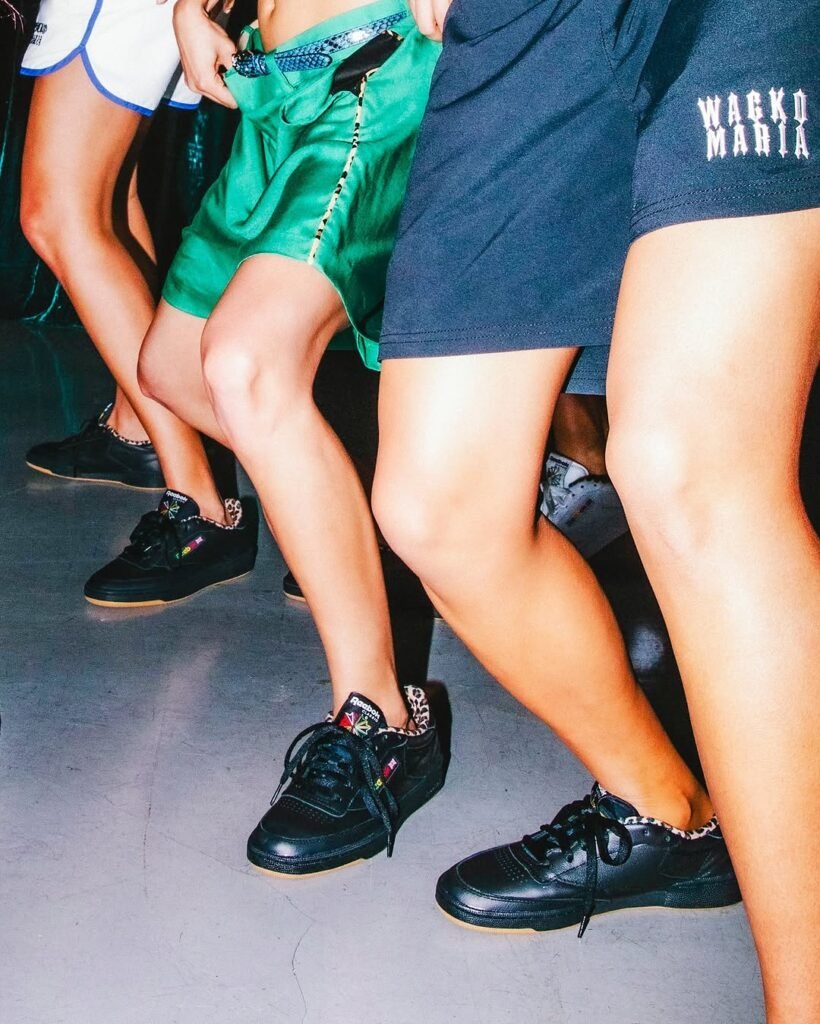
- Founded: 2005 in Tokyo by former J‑League footballer Atsuhiko Mori.
- Description: Wacko Maria is a menswear brand born from a passion for music (especially rock ’n’ roll) and the art of having a good time. In fact, it started as a small clothing line inside a rock-themed bar in Tokyo, which explains its strong musical and nightlife influences.
- Key Style Elements: The brand’s aesthetic can be described as eclectic and “kitsch” – bold, colorful, and often oversize looks that exude a retro, celebratory vibe. One signature item is its embroidered souvenir jackets (similar to sukajan), hugely popular especially around Harajuku where streetwear is a way of life.
- Notable Collaborations/Influences: Wacko Maria’s identity is deeply tied to rock culture. Album art, classic films, and the ethos of Tokyo’s night scene frequently inspire its collections. Though specific brand collaborations aren’t noted in the article, Wacko Maria’s unique theme and origin story have garnered it a cult following and made it a standout in Japan’s fashion landscape.
- Website: wackomaria.co.jp/
11. Kuro
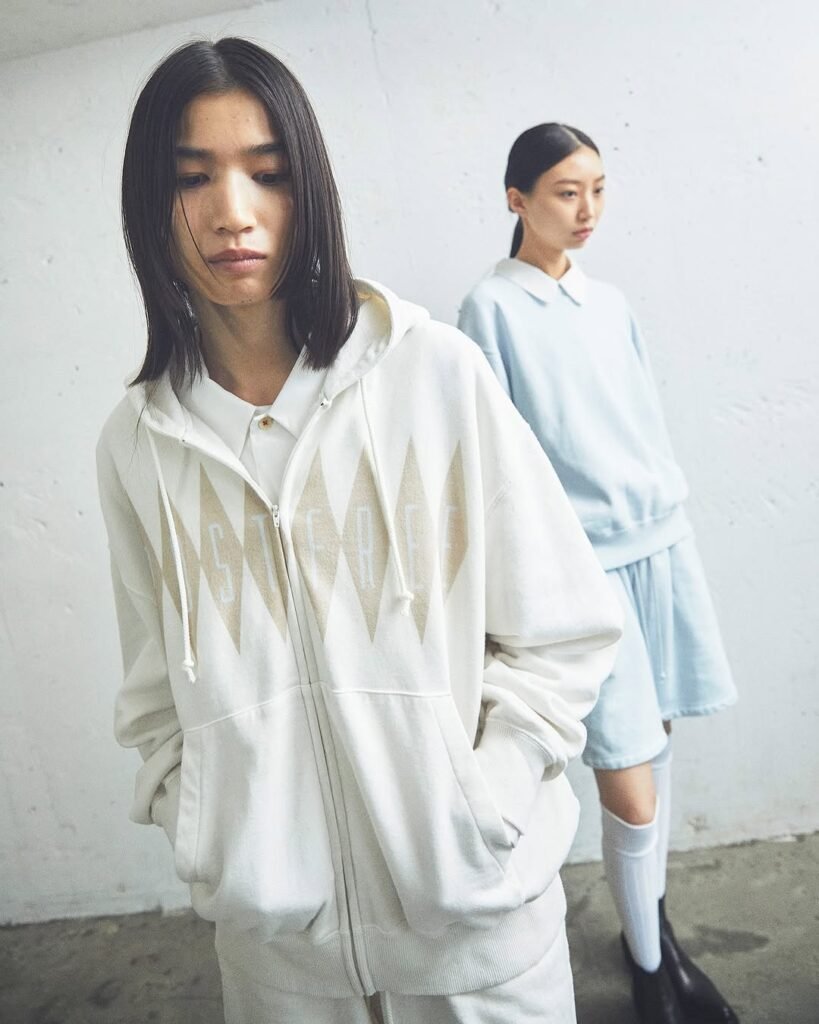
- Founded: 2010 in Japan by Yusuke Yabashi. (“Kuro” means “black” in Japanese.)
- Description: Kuro is a relatively new player in streetwear, distinguished by its commitment to marrying heritage with modernity. The brand first grabbed international attention at the renowned Pitti Uomo fashion fair, signaling its global ambition from early on.
- Key Style Elements: Minimalist yet highly innovative designs define Kuro. Yabashi puts a premium on Japanese craftsmanship – every piece is made by top artisans using specialist weaving, spinning, and dyeing techniques, yielding garments of exceptional quality. The look is clean and understated, often alluding to traditional textile arts, while constantly evolving with new materials and methods.
- Notable Collaborations/Influences: Rather than chasing collabs, Kuro draws influence from Japan’s rich artisanal culture. Yabashi’s focus on preserving traditional craft within a modern framework has earned Kuro respect among fashion connoisseurs for pushing boundaries without losing cultural roots. Its success showcases how honoring heritage can itself become a brand’s signature influence.
- Instagram: instagram.com/kurodenim/
12. Facetasm
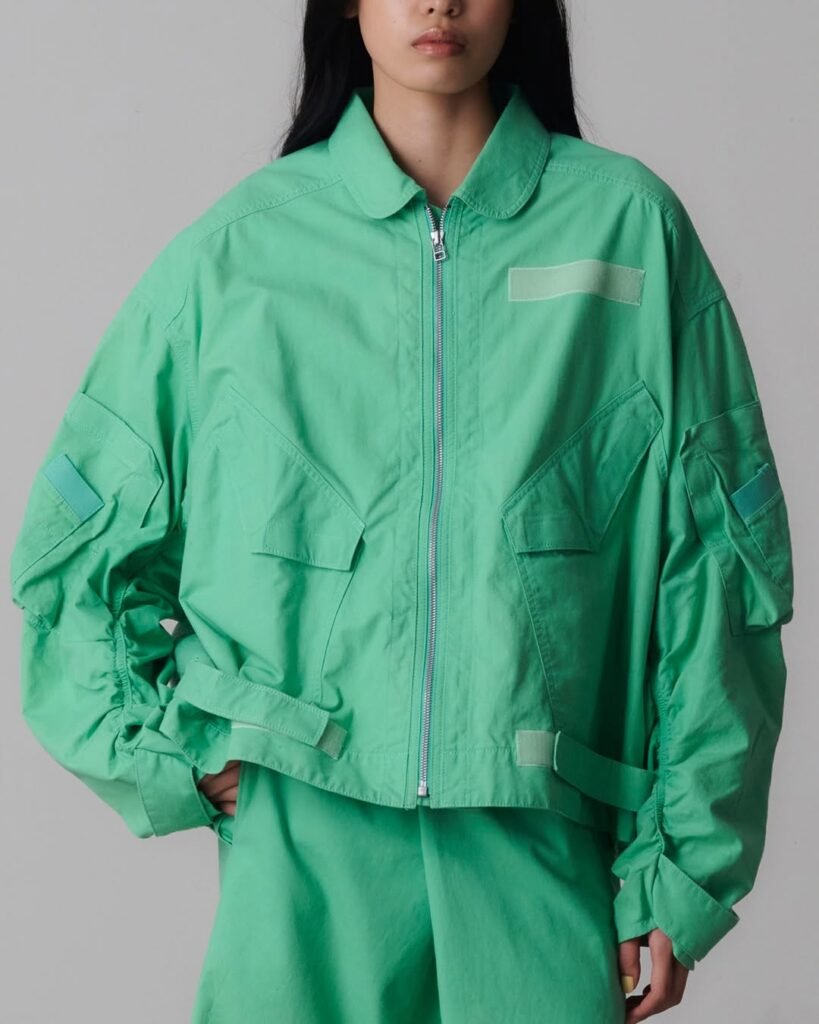
- Founded: 2007 in Tokyo by Hiromichi Ochiai (first runway collection in 2012).
- Description: Facetasm (from “facet”) is a cutting-edge label offering men’s and women’s streetwear with an eccentric twist. Ochiai’s vision presents an original, relaxed style that often draws on traditional Japanese attire for inspiration – for example, wide flowing pants reminiscent of hakama or kimono silhouettes.
- Key Style Elements: Facetasm is known for daring color clashes and inventive layering. The brand playfully pairs patterns and hues that seemingly shouldn’t match, yet ultimately create a striking harmony. Oversized fits and experimental textiles further embody an audacious street aesthetic, reflecting Tokyo’s vibrant “culture de la rue” (street culture).
- Notable Collaborations/Influences: Facetasm’s impact comes from its bold design language, which has caught the eye of the global fashion community. While specific collaborations aren’t noted in the article, the brand’s ability to straddle high-fashion and underground style (it’s been a darling of fashion week showcases) has made it influential among trendsetters who seek something different and edgy.
- Instagram: instagram.com/facetasmtokyo/
13. Neighborhood
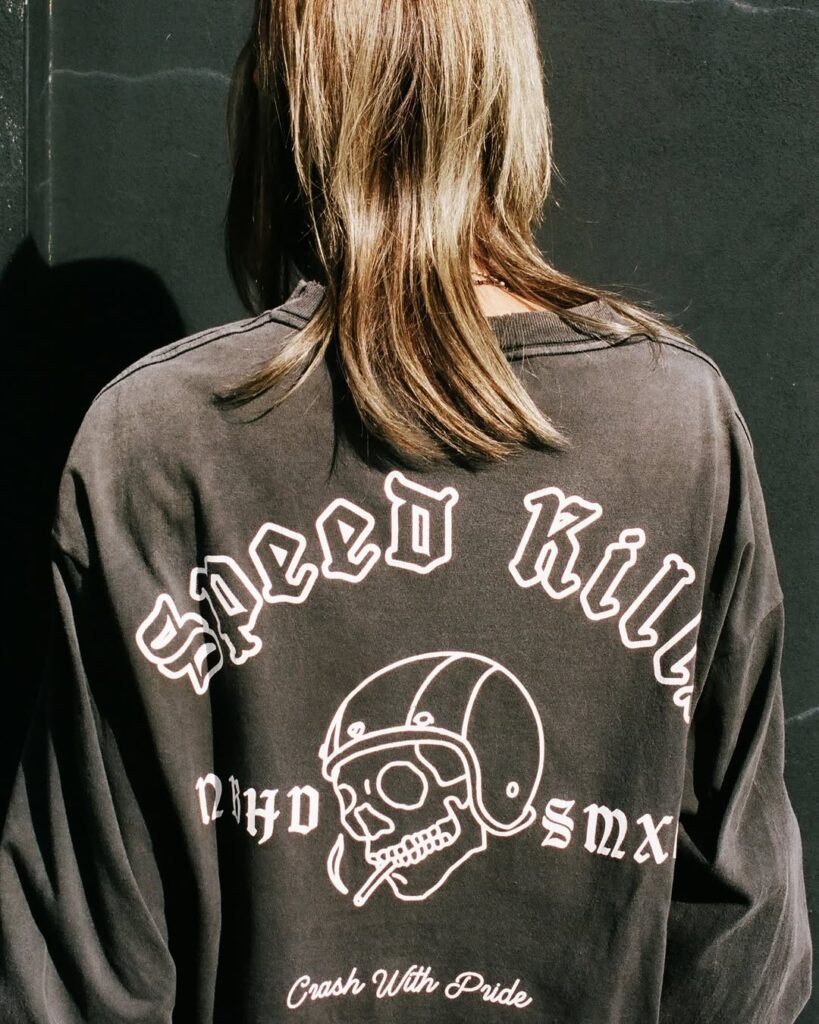
- Founded: 1994 in Tokyo by Shinsuke Takizawa.
- Description: Neighborhood’s inception was fueled by Takizawa’s passion for motorcycles. The brand’s concept revolves around reimagining classic utilitarian garments (from military, biker, and outdoor wear) through a Japanese streetwear lens.
- Key Style Elements: Casual and functional are key words for Neighborhood. Many pieces are everyday staples – rugged denim, biker jackets, workwear-inspired pants – designed to fit seamlessly into any wardrobe or environment. Yet among these accessible items, the brand also introduces bolder pieces with unique cuts or graphics that hint at its Japanese street-style flair.
- Notable Collaborations/Influences: Neighborhood became a cornerstone of the Ura-Harajuku street fashion movement and has influenced numerous contemporary brands that mix utilitarian and urban styles. Its blend of motorcycle culture and Tokyo streetwear ethos has also led to collaborations with various global brands over the years, solidifying its reputation as a pioneer of the genre. (Specific collabs aren’t detailed in the source, but the brand’s legacy speaks through its widespread stylistic influence.)
- Instagram: instagram.com/neighborhood_official/
14. WTAPS
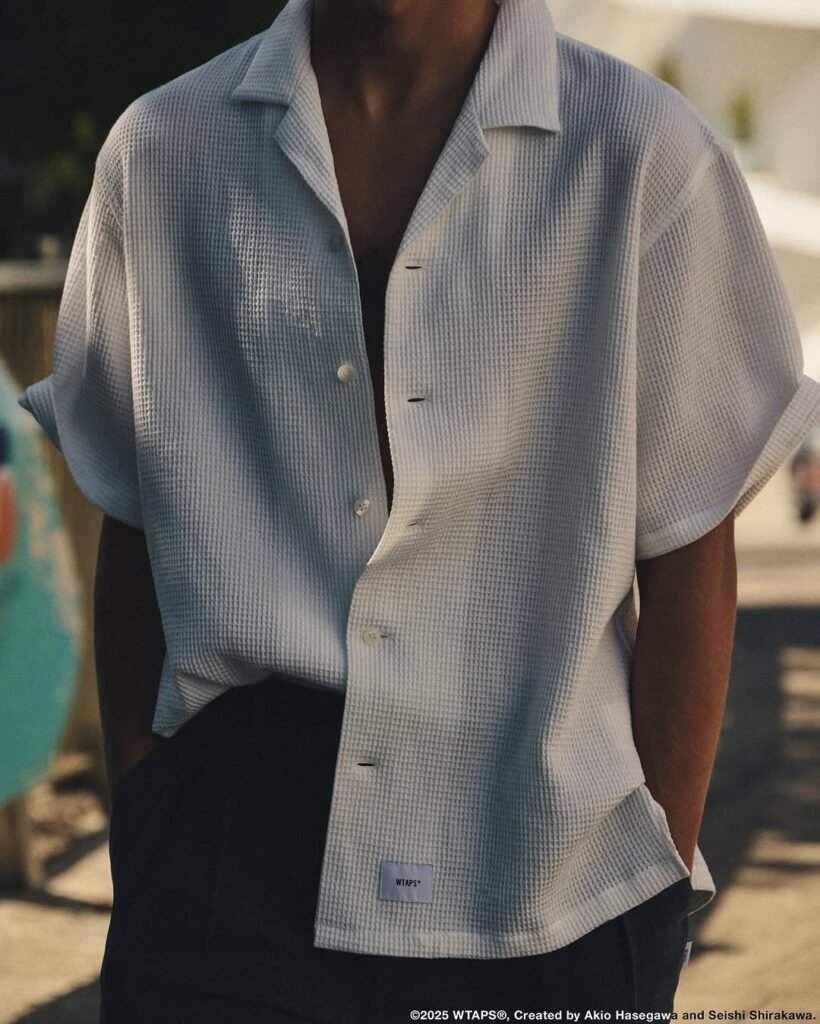
- Founded: 1996 in Tokyo by Tetsu Nishiyama.
- Description: WTAPS (pronounced “double-taps”) is a brand steeped in Japanese streetwear tradition. As the final entry in this top 15, it exemplifies how many influential labels trace their roots to Tokyo’s scene. Nishiyama’s design philosophy – “placing things where they should be” – underscores the brand’s pragmatic yet authentic approach.
- Key Style Elements: WTAPS produces apparel that feels utilitarian and authentic. The collections heavily feature denim and military-inspired basics with comfortable cuts, giving a relaxed, understated urban look. In each piece, one can sense the essence of Japanese street style that resonates with youth not just in Japan but globally.
- Notable Collaborations/Influences: The ethos of WTAPS has made it a globally respected name. By “placing things where they should be,” the brand focuses on authenticity over hype, a principle that has influenced many designers seeking substance in streetwear. (WTAPS has engaged in collaborations with other streetwear and footwear companies, though specific ones aren’t detailed in the source article.)
- Instagram: instagram.com/wtaps_tokyo/
- Top 14 Japanese Streetwear Brands That Are Redefining Cool Right Now (2025)

- 16 Best Anime and Manga Stores in Tokyo: Otaku Shopping Guide for Every Fan (2025)
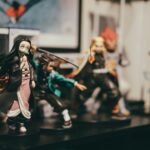
- Amazing Architecture in Tokyo: 14 Jaw-Dropping Designs That Redefine Urban Cool (2025 Guide)

- 25 Japanese Top Cosplay Influencers You Should Know In 2025

- 12 Most Unique Places in Japan You Won’t Believe Exist (2025)
